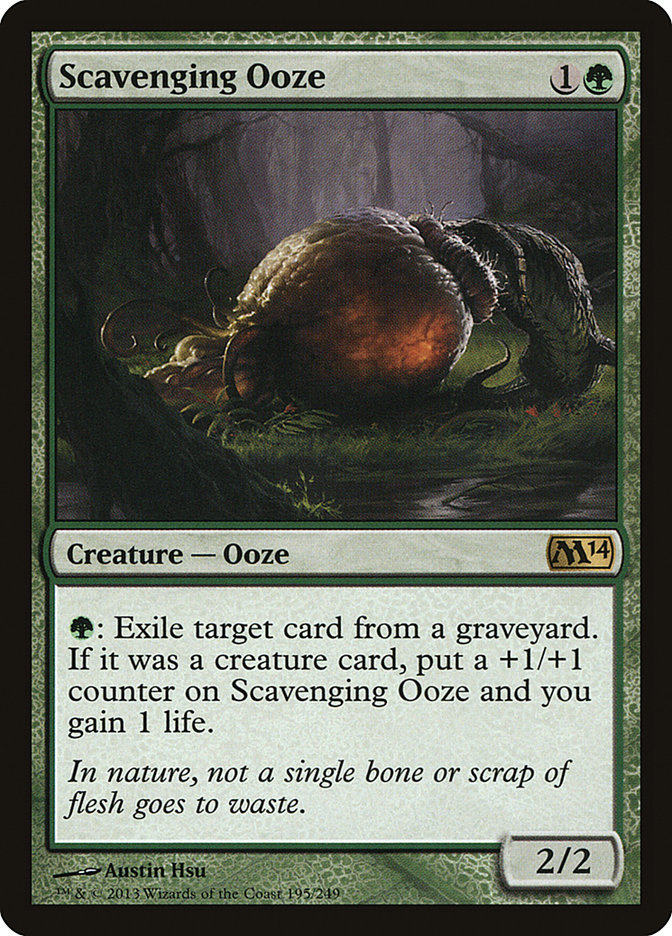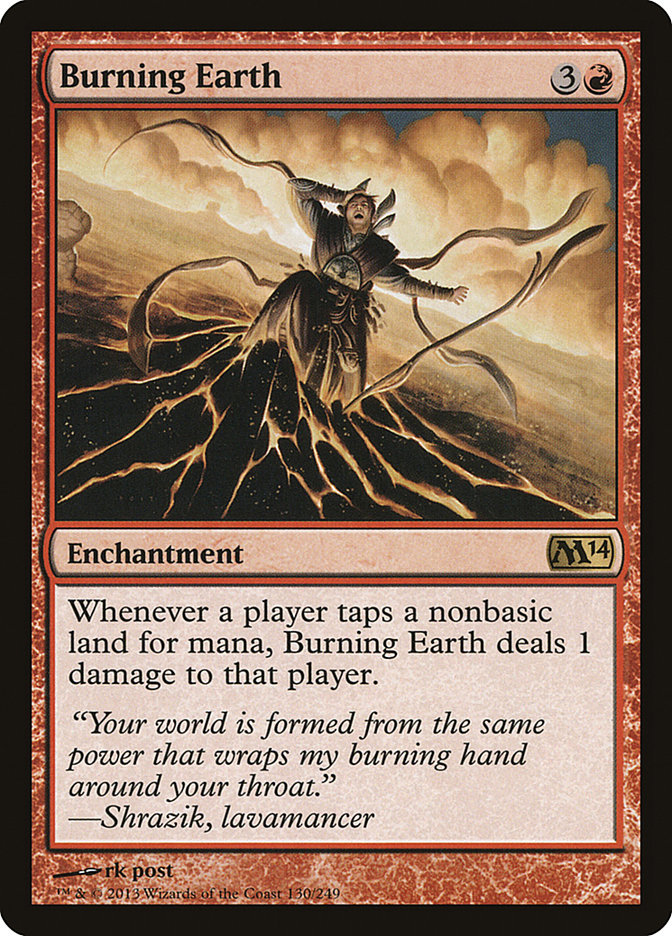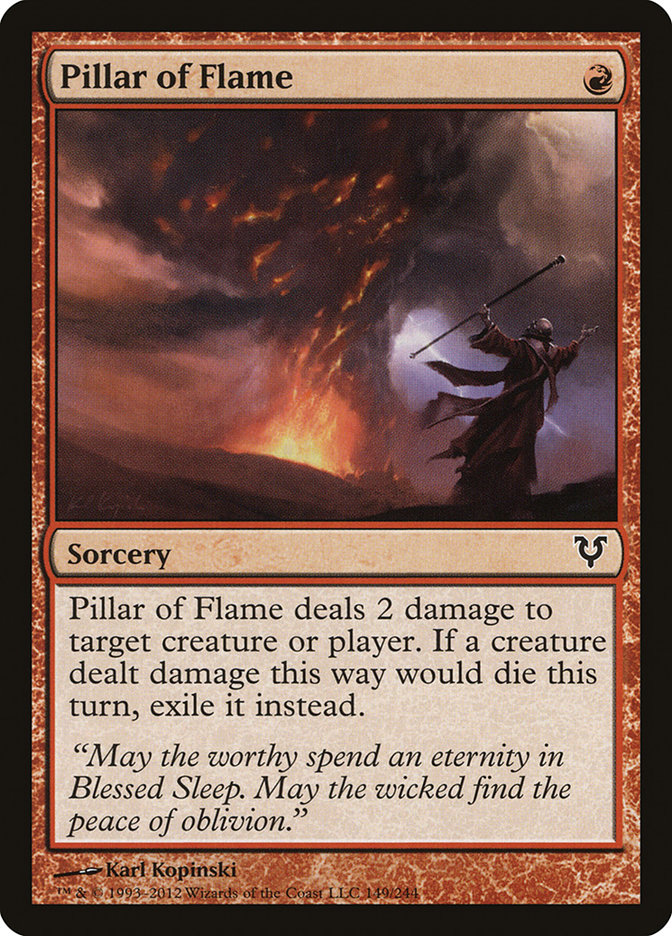U/W Flash
Yep, still not dead.
If you pay attention to the decks from the Magic Online Daily Events (and you should), then you’ve noticed that Flash is simply adapting.
Creatures (9)
Planeswalkers (2)
Lands (26)
Spells (23)
- 1 Dissipate
- 3 Syncopate
- 4 Think Twice
- 4 Azorius Charm
- 4 Supreme Verdict
- 3 Detention Sphere
- 4 Sphinx's Revelation
Sideboard

This list and those similar are basically killing it on Magic Online. I don’t know where it originated, but I do know that it’s incredibly potent in the current metagame. The shift away from U/W/R is because of three cards.
Since Ooze is prevalent, Flash decks had to do away with the "removal spell, Snapcaster Mage into removal spell" curve they loved so much. Instead, playing the full complement of Supreme Verdicts has become necessary as a means to gain card advantage and deal with multiple creatures.
Flash decks could have potentially done this sooner, but spot removal was generally more efficient. Only certain threats needed killing, and by using cheaper spot removal, Flash was able to keep its counter wall up for longer.
The above U/W Flash deck resembles Esper Control far more than it resembles U/W/R Flash and will likely play out as such. That said, there is a reason Flash did much better than Esper as a whole, but much of that had to do with the texture of the format. Esper would be a fine deck right now, except that it would be splashing for extraneous removal spells and Nephalia Drownyard, which isn’t particularly good against anyone at the moment.
Anyway, a miser’s Snapcaster Mage isn’t out of the question, as you do want your Sphinx’s Revelations to always find you another Sphinx’s Revelation. It isn’t unthinkable to play multiple Snapcaster Mages and side most of them out against Scavenging Ooze either. Esper typically played fewer Snapcaster Mages, as they weren’t concerned with nickel and diming people like U/W/R Flash players were.
Since this "new" U/W deck has a similar game plan to Esper, cutting Snapcaster Mage entirely, Scavenging Ooze or not, makes a lot of sense.
I can’t say I’ve had the pleasure of getting Burned more than a few times. Regardless, the threat of it is enough to shy away from playing a three-color deck that doesn’t have much of a board presence.
Consider Jund and its supposedly bad matchup against decks with Burning Earth. Jund is a slow-ish deck, but it has the capability to cast Huntmaster of the Fells before its opponent can play Burning Earth. If they spend their turn doing so, Jund can simply reply with Thragtusk. At that point, it isn’t uncommon for an opponent to be locked under their own Manabarbs, just like the olden days.
U/W/R has no such capabilities, at least in game 1. Post-board, a package of Rhox Faithmender and Archangel of Thune is a reasonable way to beat it. Being proactive has been a better way of dealing with problems for a while now, and I don’t think that’s going to change any time soon.
Obviously you could load up on Izzet Charms, Syncopates, Detention Spheres, or anything else that’s good against enchantments as well as creatures. Tapping out for a threat that can potentially beat them is a much better way to fight an enchantment than trying to awkwardly answer it.
Jund (and other green decks) have Tree of Redemption or Trostani, Selesnya’s Voice to gain life and big monsters to put pressure on their opponents. U/W/R has some awkward answers that are obviously passable, but I wouldn’t expect to go undefeated against Burning Earth on any given day.
While Pillar hasn’t directly contributed to U/W/R Flash getting worse, the fact that it’s no longer an all-star in the format means that there is little reason to still play red. Things like Warleader’s Helix and Turn // Burn are cute, but are they worth splashing for? When you’re considering moving all your Pillars to your sideboard, you should stop and think about why you’re playing red in the first place.
From the above list, I wouldn’t change much. Four colorless lands might be a tad too many, but with 26 lands and plenty of cantrips, it probably works fine. Naturally, I err on the side of caution and would prefer to cast my spells rather than having a land that does things in the mid-to-late game.
Fifteen blue sources is cutting it a bit close though. Typically you need blue mana early to function, and then you rely on your blue cantrips to find you other sources of mana. With only fifteen blue sources, you might never get off the ground in the first place. I would cut the Mutavault and a Plains for two Islands and would heavily consider an Azorius Guildgate instead of another Plains.
If I’m playing straight U/W, it’s probably because I think counterspells are quite good in the format. If that’s the case, first I’m going to celebrate, but then I’ll actually add some counterspells to my deck! Four is on the low side, especially for a Flash deck. For straight U/W, I could see six being reasonable, although I likely wouldn’t go any higher than that unless the format was very slow.
A Detention Sphere is an easy cut since you rarely need or want multiples. It should basically be in the deck to give you an out to something that slipped through the cracks, not a crutch. Jace, Architect of Thought is a very, very good card, but it’s one that doesn’t seem like it holds up well in the format. Against Jund and the mirror , having a planeswalker is nice, but you don’t want any if the format has a lot of Thundermaw Hellkites.
The maindeck Aetherling is much better than something like Runechanter’s Pike. If you expect a lot of mirror matches, trading one of your utility lands for a Cavern of Souls is a fine idea.
Initially, I liked the sideboard a lot. Blind Obedience is fantastic against Hellrider and Thundermaw Hellkite, assuming you have some way to deal with them permanently. With Rhox Faithmender, it can get out of control and race nearly anything.
I don’t like Terminus to go with those cards because sideboarding in more creatures to go with more sweepers is counterintuitive, as is a six- mana sweeper when you’re trying to take advantage of e xtort. Archangel of Thune and/or Celestial Flare in tandem with Rhox Faithmender would be my preferred answers to aggressive decks.
The mix of Negates and Dispels you sideboard has to do with how many b lue decks you’re expecting (for the total number of counterspells) and how many Negates you think you’ll bring in against other decks (to determine the split). For example, I like Negate against Jund for their Underworld Connections, Rakdos’s Returns, and planeswalkers, but I don’t think I’d board in more than two. Because of that, I can’t see playing a three Negate / one Dispel split for any reason.
I’m somewhat surprised by the lack of Ratchet Bomb in the 75, but if Pillar of Flame isn’t good right now, Ratchet Bomb isn’t likely any better. As a general catchall, I prefer a singleton Pithing Needle in the sideboard. It’s not a card you want to draw multiples of, but having one is a nice answer to Liliana of the Veil; Garruk, Primal Hunter; and Kessig Wolf Run.
The final card in my sideboard would be an additional win condition against control. Aetherling is good, but it’s unreliable without Cavern of Souls. Post-board, you probably want another threat, preferably something that kills quickly should time become an issue. Jace, Memory Adept seems like the best candidate.
That brings us to:
Creatures (9)
Lands (26)
Spells (25)

Sideboarding
Now, I typically don’t provide sideboarding guides since I think they are a crutch and eventually you’re going to have to learn how to do it on your own. If it were just "cut the bad cards for good ones," it would be easy enough to figure out. However, I sideboard differently depending on what I’ve seen out of my opponent’s deck, how aggressive / passive they’re playing and mulliganing, and whether I’m on the play or the draw. After years of playing and constantly analyzing my choices, I trust my intuition. Think for yourself, try to solve the puzzle on your own, and eventually you’ll have that intuition as well.
However, this is not a typical Standard format, and this is not a typical Standard deck, so explaining why I want things in certain places or why I don’t is likely very valuable.
Flash
My game plan for these matchups varies drastically depending on how I’m planning on killing them. If it’s with Boros Reckoner / Harvest Pyre, then I have to be relatively aggressive, as I’m trying to kill them with damage and each point will matter. If my deck has a lot of counterspells and an Aetherling, like this one, then I’m probably the control deck. At that point, my creatures become less important and basically only exist to block their creatures.
Assuming they are playing Matt Costa list in the dark, I would likely sideboard like this:
In:
2 Dispel
Out:
Thundermaw Hellkite is the real tension here. Obviously they are the aggressor in the matchup and you want to be able to kill that guy on site, but how effective is Supreme Verdict, Detention Sphere, or Celestial Flare? Each has its own downsides. You could side in Blind Obedience in an attempt to mitigate that, but that effect isn’t worth a card (and tacking on extort doesn’t help).
They are playing the same Sphinx’s Revelation game as you, except that they have the aggression backup plan. If they’re playing three Dispels, you are almost certainly disadvantaged based on deck matchup. On top of that, Negate, one of your premier sideboard cards for other control decks, is virtually worthless. Jace, Memory Adept is no longer safe either, but it’s a card I feel like we need post-board to be threat dense and in order to close games quickly.
In a card-for-card mirror match, I might sideboard like this:
In:
2 Dispel
2 Negate
1 Jace, Memory Adept
Out:
4 Supreme Verdict
1 Celestial Flare
Keeping a miser’s Supreme Verdict is a possibility, as there might be a game where they have the opportunity to tempo you out with Restoration Angels and counterspells. You still have Detention Sphere, but if you’re playing planeswalkers, you might want Oblivion Rings so you can hit their Detention Spheres on your planeswalkers. At that point, you might want to keep in a singleton Supreme Verdict and shave an Azorius Charm instead.
I see a lot of people cutting Azorius Charm during sideboarding, but the cantrips do function as part of the mana base. You need to keep that in mind; some people don’t take into account enough the power of velocity, spending your mana every turn, and making your land drops.
Jund
You need enough things to deal with creatures so you don’t get run over but also enough things to beat planeswalkers and Rakdos’s Return.
In:
1 Pithing Needle
1 Jace, Memory Adept
2 Negate
Out:
1 Celestial Flare
1 Supreme Verdict
1 Azorius Charm
1 Restoration Angel
You aren’t likely to kill Jund with damage. Instead, you should play for a late game that involves Aetherling or Jace, Memory Adept. Shaving Restoration Angel is fine, as you still want something that can attack planeswalkers, but it mostly turns on their removal. If my Restoration Angel is blinking my Augur of Bolas, I’m fine whether it lives or dies since it gives me another Impulse regardless. Drawing two Angels and zero Augurs is pretty unacceptable, which makes me want to have more Augurs than Angels post-board.
Beating Thragtusk is a little more difficult than before. In the past, I’d use Augur of Bolas plus Snapcaster Mage to trade with the front side, and Restoration Angel could hold off the back. With that no longer an option, I expect Thragtusk to do a lot of heavy lifting in this matchup. Perhaps keeping in the fourth Angel is a necessity for that reason, but I think we’ll be ok.
The Aristocrats
This is the matchup I used to have Rest in Peace for. Without it, their entire deck does a lot of sweet things, and they get to bring in cards like Obzedat, Ghost Council and Sin Collector / Duress. Without Rest in Peace, it’s certainly a difficult matchup, but you have the capability of going over the top.
In:
I have no idea.
Out:
Probably some counterspells and the Celestial Flare.
I could see cases being made for Blind Obedience (if they have Obzedat and Falkenrath Aristocrat), Rhox Faithmender (if they keep in Blood Artist, plus it’s a fine card against Cartel Aristocrat), Archangel of Thune (this is likely coming in every time), and potentially Pithing Needle.
I think that building a board presence is going to be more effective than using sweepers to control their board. Then again, sometimes all you need in a Sphinx’s Revelation, and then all those sweepers you used to mostly poor effect start looking like they were all part of the plan. As we saw during my Versus video with Brad, if you don’t cast Sphinx’s Revelation, you probably lose to Junk Aristocrats.
The man plan seems like the best, but feel free to switch it up. Maybe the counterspells are so much better on the play that it makes up for it.
G/R Aggro
This one should be relatively simple.
In:
3 Rhox Faithmender
2 Archangel of Thune
2 Celestial Flare
2 Blind Obedience
Out:
2 Think Twice
1 Aetherling
2 Syncopate
1 Restoration Angel
1 Augur of Bolas
You need to cut some counterspells since you’ll be tapping out a lot. It’s possible that Syncopate is better than Dissipate on the draw, but I’m not sure. Being able to counter something on turn 2 is nice, but Syncopate is also weak because of the mana advantage they’ll get on you with Arbor Elf and Elvish Mystic.
There are 23 spells in the maindeck, which is a fine number, but post-board you’ll be going a lot lower unless you side out some creatures. Shaving the Augur of Bolas / Restoration Angel package is fine since both are reasonable cards but not great. I could see cutting a second Angel instead of the first Augur for curve considerations, especially if you’re on the draw.
Remember that you can block, resolve damage, and then Celestial Flare while still in combat. That will serve you well when you’re trying to kill their Thundermaw Hellkite while their Strangleroot Geist’s undying trigger is on the stack.
Bant Hexproof
This matchup can be tricky. They should have Mending Touch, which might make Dispel a worthwhile card to side in, if only because you lean heavily on your Supreme Verdicts resolving. However, I do think it’s possible to build a solid board position with Rhox Faithmender and Archangel of Thune. At the very least, that will encourage them to overextend.
Going with one plan or the other is likely fine, but I wouldn’t try to mash both together. Drawing Rhox Faithmender and Dispel at the same time isn’t exactly a recipe for success.
Just Play Jund
[author name="Todd Anderson"]Todd Anderson[/author] may have said it best.
Jund is obviously a very good deck, but it is hardly without shortcomings. At its core, there’s a pile of creatures, a larger pile of one for ones, and a handful of two for ones. By itself, that shouldn’t make a deck, let alone the dominant deck of a format.
For the longest time, I had a problem where I couldn’t beat Jund with anything other than U/W/R Flash and Junk Reanimator. My plan against them was relatively simple—I would deal with their creatures and go over the top of whatever else they’d try to do.
Awkwardly enough, instead of utilizing that tactic with various Cartel Aristocrat decks (be it Junk, W/B, or W/B/R), I focused on the wrong things. Perhaps the reason why Jund is so dominant is because we sideboard poorly.
My plan with the Cartel decks almost always involved boarding out removal. I’d try to ignore Huntmaster of the Fells and Thragtusk while leaving in the bare minimum to kill Olivia. Given enough time, I could outlast their Bonfire of the Damneds and Tragic Slips. Obviously problems started arising when I was able to mount a comeback by rebuilding my board, only to find myself on the wrong end of a racing situation against Thragtusk and Kessig Wolf Run.
Then one day Brad Nelson broke it.
He showed me his Junk Aristocrats sideboard with Slayer of the Wicked and more removal. He planned on killing their dudes and grinding them out eventually. If they didn’t have a clock, he had all the time in world. Slayer of the Wicked is perfect because it trades with both sides of Huntmaster of the Fells or kills Olivia Voldaren and trades with half a Thragtusk.
Well, apparently I’ve been doing it wrong this whole time!
Part of the reason Jund is so effective is because you don’t have a game plan. You just cast dudes and kill things, and that usually kills people. When people get a chance to sideboard, they have the potential to drastically reduce their deck’s effectiveness, and I’m a member of that camp.
I don’t think it matters what your plan is as long as you have one. Be sure to always be questioning yourself, even if it’s something you "know" is correct. You could either end up being wrong or there could be something better out there.
GerryT
@G3RRYT on Twitter



